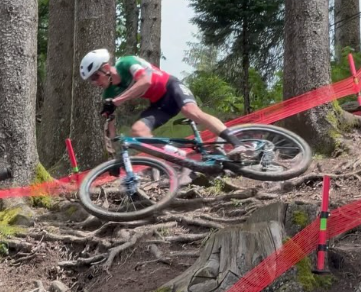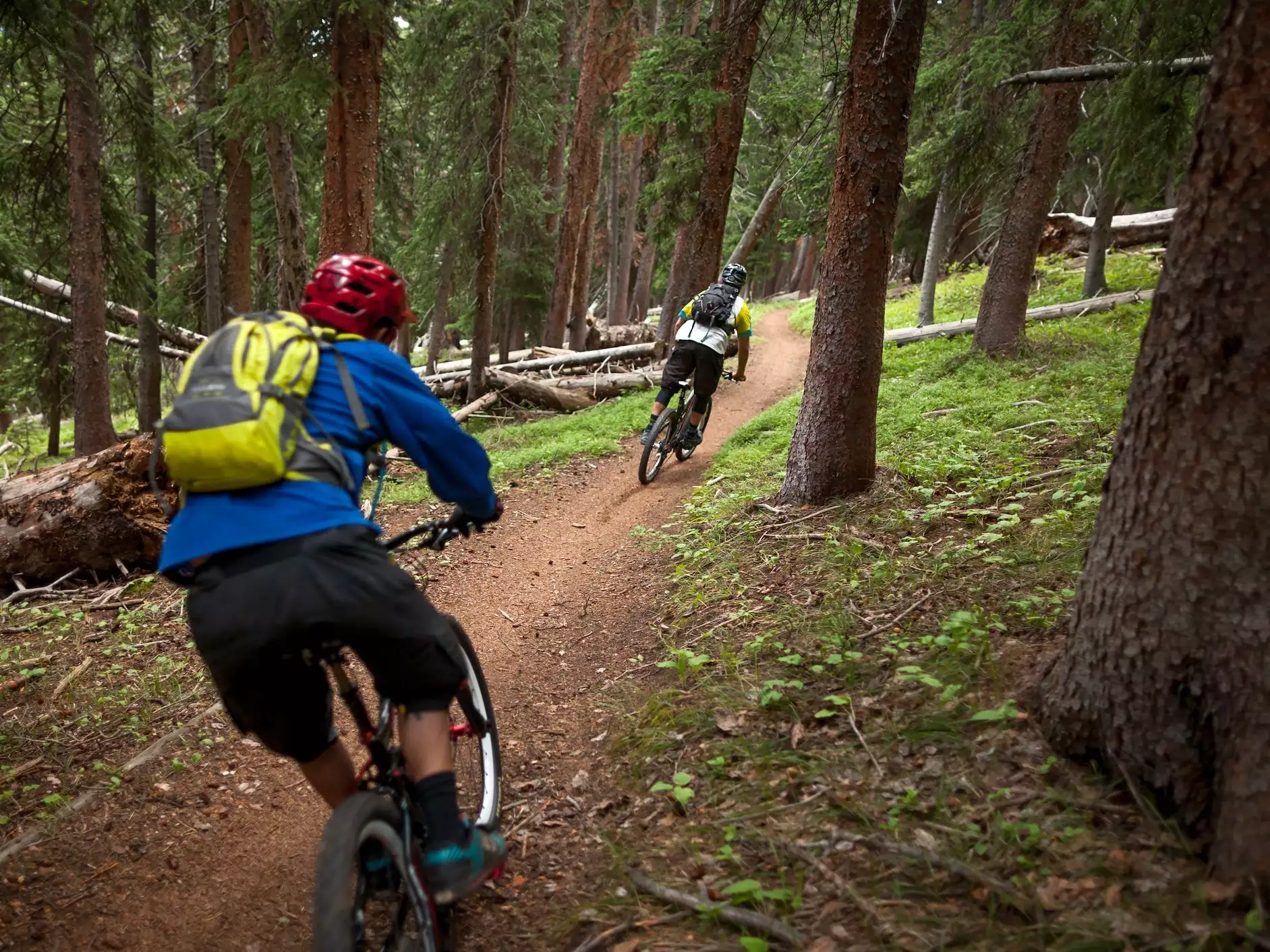Can anyone start with the sport of mountain biking? Yes! If you can ride a bicycle, you can also learn mountain biking. If you wanted to start running but have given up due to the strain it puts on the ligaments and muscles, biking is perfect for you. Mountain biking is much gentler on the body, the burden on your body is way less and it is more convenient for recreation.
Table of Contents
Getting the right Mountain bike
In general, you should make sure that the bike fits you – and that does not mean the paint and varnish look good. You should feel comfortable on the bike. Consult your local dealer or ask us. We will help you not only in the selection of the appropriate material and the frame size but also in determining the correct seating position.
$500 is the lower limit for a quality MTB. For $1000 you can get a very good bike. The weight of a fully equipped bike is then between about 25 to 26 lbs. By comparison, the bike that I ride currently cost me around $3000.
A distinction is made between hardtail (front suspension only) and full suspension (front and rear suspension). Full-suspension is heavier but is also more comfortable.
Pay attention to good tires and correct pressure
Mountain biking is the robust version of pedalling. The tires are at least 50 millimetres wide. An important criterion to have fun in the terrain is the tire air pressure. Mountain bikes are driven with substantially lower air pressure than, say, road bikes on the road. Low pressure means more grip and more comfort.
Depending on your weight, I recommend recreational athletes inflate the tire to about 2 bars. The rule of thumb is – as little air pressure as possible, as much as necessary. This enhances driving pleasure and ride comfort.
Here’s a nice blog post from REI on how to choose the best bike tires for your bike.
Get your hands on the right Clothing
Just like the bike, you need to have the bike clothes that fit right. Mountain biking clothing plays an important role in the overall experience. So invest a little more money and get quality clothing. Functional clothing is more expensive but also works great.
The most important tool is the shorts. It represents the contact surface with the saddle. The so-called seat leather in step (which is no longer made of leather nowadays) must fit well. Be careful: There are differences between women’s and men’s trousers. I recommend pants with straps from experience because they do not slip so easily.
Also important is an undershirt that makes the sweat from the skin disappear quickly. When you buy a jersey be sure that several jersey pockets exist. Also, look for vests with Wind stopper material on the front to protect from the air stream when going downhill.
Mountain Biking necessary equipment

Helmet (mandatory): the helmet is an absolute prerequisite for your safety in the bike park. We strongly recommend the full-face helmet, as it easily ensures the best protection in case of falls. No question: I always wear a helmet, both in competition and in training. You should do it too!
It is important to make sure that the helmet is not only well ventilated, but your head shape adjusts optimally. Not every head is equal in shape. Just try several models and compare them. Also, make sure that the helmet ensures good ventilation, and that it has an official seal of approval. If in doubt, ask us. You can get a good helmet for $50 or less.
Visor: Equally important is a visor that protects your whole field of vision.
Elbow and knee pads: They protect you from cuts and scratches and also serve as impact protection at the places that are particularly exposed, namely elbow and knee.
Chest protection: Not compulsory but highly recommended as additional protection for the back and upper body.
Shoes with good soles: For a downhill or free ride could take a simple pair of sneakers, but we always recommend shoes with a thicker, firmer sole to reduce the load while driving.
Gloves: They give you more grip on the brakes and protect you when falling at the same time from any cuts. In a fall, you land usually first on the hands, so you should ensure appropriate coverage.
Flats or Clipless pedals?
We will advise you to go for clipless pedals. The fact that the shoe is “clicked” by a plate on the sole of the pedals, there is a better connection between the foot and bicycle. You are much safer on the pedals and do not slip off the pedal due to moisture.
The disadvantage, however, for beginners is obvious: the release from the pedal is an unusual movement. Many newcomers have the fear of falling down fast enough. Practice it!
If you want to learn more on this topic you can check out our article on if mountain bikes come with pedals or not and why.
Become a Biking expert
You learn by mountain biking regularly. If you are biking in an area regularly, you will quickly benefit from your experience. Try, for example, once initially at low speed on the flat, how it feels when you block the rear tires by brakes and the rear wheel slips on loose ground. Drive extra slow once over a narrow line, and check your balance.
Using these little tricks you can achieve perfection. From experience, I can say that this process is accelerated significantly if you take part in skills training.
Stay careful in forests. It always depends on where you are with your bike. This means that bike only in ways that are at least two meters wide in the forest.
Conclusion
To sum up, mountain biking is an amazing sport to get into. And it doesn’t take a lot of equipment to start out with. Just remember to wear the right safety gear and make sure your mountain bike is in good condition before you head out on the trail. As you can see from the guide above, there are a lot of different things to consider when getting ready for your first trail ride. Luckily, most people have a decent bike lying around and all it takes is a few small upgrades to be ready for your first mountain biking adventure! If you want to learn more about what you need to get started, feel free to check out our other blog posts as well.

Daniel, a mountain biking expert with a Master’s degree in Sports Science, has over 10 years of experience navigating the toughest trails. With a passion for sustainable riding, he shares expert tips and gear advice on mountainbikerz.com. Join his 145K followers on Instagram.

